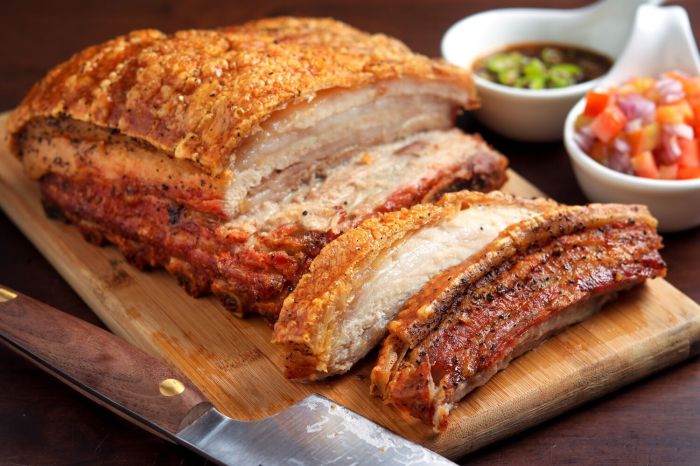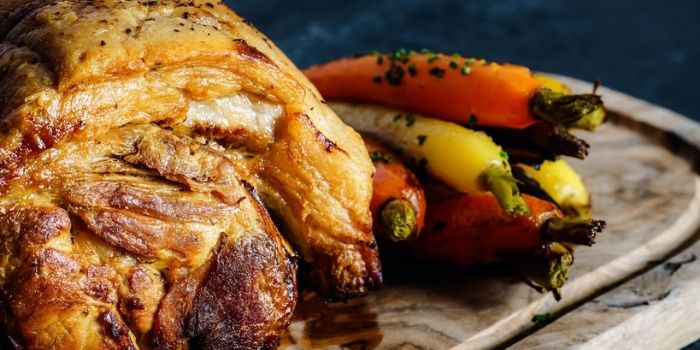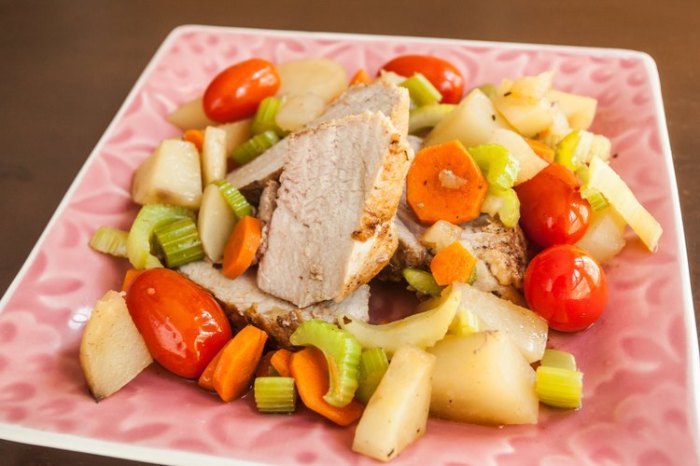A prep cook removes a pork roast from the freezer, embarking on a culinary journey that demands precision and adherence to food safety protocols. This comprehensive guide will delve into the intricacies of this task, ensuring that every step is executed with the utmost care and efficiency.
From understanding the potential hazards associated with improper handling to mastering the art of thawing using various techniques, this guide will equip prep cooks with the knowledge and skills necessary to navigate this culinary challenge with confidence.
Food Safety and Handling Procedures
Maintaining proper food safety and handling procedures is crucial to prevent foodborne illnesses and ensure the safety of consumers. When handling frozen pork roasts, it is essential to follow specific steps to minimize the risk of contamination and spoilage.
Removing a Frozen Pork Roast from the Freezer
- Wear clean gloves to protect your hands from potential pathogens.
- Use a sharp knife or meat cleaver to carefully remove the roast from the freezer packaging.
- Place the roast on a clean cutting board or baking sheet lined with parchment paper.
Potential Hazards and Risks
- Cross-contamination: Improper handling can transfer bacteria from raw meat to other foods, causing cross-contamination.
- Foodborne illness: Consuming contaminated pork can lead to foodborne illnesses such as salmonella or E. coli.
- Spoilage: Improper storage and handling can accelerate spoilage, resulting in unpleasant odors and flavors.
Thawing Techniques and Timeframes

Thawing a frozen pork roast properly is essential to ensure even cooking and prevent the growth of bacteria. There are several methods for thawing a pork roast:
Refrigerator Thawing
Place the frozen roast in the refrigerator on a plate or in a shallow dish. Allow it to thaw for 24-48 hours, depending on the size of the roast.
Cold Water Thawing
- Place the frozen roast in a leak-proof plastic bag.
- Submerge the bag in cold water, changing the water every 30 minutes.
- Allow 1 hour of thawing time per pound of meat.
Microwave Thawing
- Use the defrost setting on your microwave.
- Thaw the roast for short intervals, checking the temperature frequently.
- Rotate the roast every few minutes to ensure even thawing.
Equipment and Tools

Proper equipment and tools are essential for handling frozen pork roasts safely and efficiently:
Knives
Use sharp knives for removing the roast from the packaging and cutting it into smaller pieces if necessary.
Tongs
Tongs help prevent direct contact with the raw meat, reducing the risk of contamination.
Cutting Board, A prep cook removes a pork roast from the freezer
A clean cutting board provides a sanitary surface for handling the roast.
Thermometer
A meat thermometer is essential for ensuring the internal temperature of the roast reaches a safe level before consumption.
Storage and Preservation

Proper storage and preservation techniques are crucial to maintain the freshness and quality of thawed pork roasts:
Refrigeration
Store the thawed roast in the refrigerator for up to 3 days. Cover the roast tightly to prevent drying out.
Freezing
If you do not plan to cook the roast within 3 days, it can be refrozen. Wrap the roast tightly in freezer-safe packaging and freeze for up to 6 months.
Preventing Spoilage
- Avoid leaving the thawed roast at room temperature for extended periods.
- Discard any spoiled meat that has an unpleasant odor or slimy texture.
- Cook the roast thoroughly to an internal temperature of 145°F (63°C) as measured by a meat thermometer.
Nutritional Value and Cooking Considerations

Pork roast is a nutritious and versatile cut of meat. It is a good source of protein, vitamins, and minerals:
Nutritional Value
- Protein: Pork roast is a rich source of protein, essential for building and repairing tissues.
- Vitamins: Pork roast contains vitamins B6, B12, and niacin, which support energy production and nervous system function.
- Minerals: Pork roast is a good source of iron, zinc, and selenium, which are important for immune function and red blood cell production.
Cooking Considerations
- Roasting: Roasting is a popular cooking method for pork roasts, resulting in a tender and flavorful dish.
- Braising: Braising involves cooking the roast in a liquid, creating a moist and succulent result.
- Seasoning: Seasoning the roast with herbs, spices, and marinades enhances its flavor and tenderness.
FAQ Corner: A Prep Cook Removes A Pork Roast From The Freezer
What is the safest method for thawing a pork roast?
Thawing a pork roast in the refrigerator is the safest method, as it allows the roast to thaw slowly and evenly, minimizing the risk of bacterial growth.
How long does it take to thaw a pork roast in the refrigerator?
The thawing time will vary depending on the size of the roast. As a general guideline, allow approximately 24 hours for every 5 pounds of meat.
Can I thaw a pork roast in the microwave?
While it is possible to thaw a pork roast in the microwave, it is not recommended as it can result in uneven thawing and potential safety hazards. Thawing in the refrigerator or cold water is preferred.